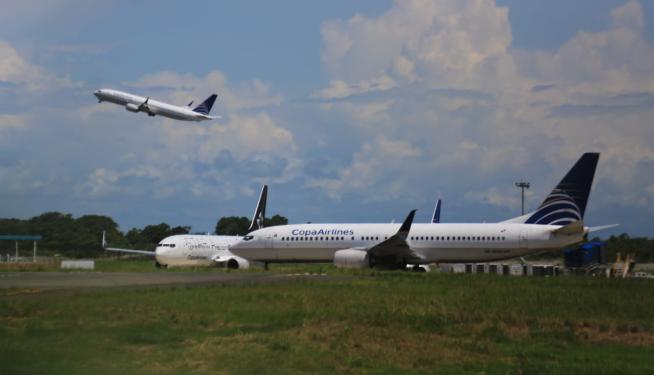Tocumen radar failure reveals lack of maintenance and investment

Wednesday, December 13, marked the day when passenger movement at Tocumen International Airport was to increase due to the Christmas season. Instead, it was the day that the radar system broke down.
The airport registers 400 daily air operations of departures and landings of both passenger and air cargo aircraft where 88% are arrivals and departures of commercial flights, 7% are cargo, 3% general aviation, and 1% others. In one year, the volume of operations at the main air terminal increased 10.08%.
In the midst of the bustle, the radars work, allowing departures and arrivals to be managed in coordination between air traffic controllers and airlines to maintain adequate distribution of airspace validating availability on runways and in the terminal, and ensuring that operations are carried out without congestion or interruptions.
But, a failure in the radar installed in July of this year on Perico Island, on the Amador Causeway, changed the panorama.
The air traffic controllers who were on duty at the Tocumen tower activated a contingency plan to operate through the “No Radar” mode.
The primary and secondary radar antenna for which the Civil Aeronautical Authority paid $5,717,808, was left incommunicado and a blackout was generated in the computer equipment that receives aeronautical navigation data in the air control centers.
Mayko Alvarado, president of the Panamanian Association of Air Traffic Controllers (Apacta) explained that the radar failure has exposed the inefficiencies and lack of renewal of aeronautical equipment.
He said that the system failed to the point that the Tocumen control tower did not receive information of any kind from the radar antenna.
“Luckily the Tocumen tower is visual, but our colleagues at the Albrook Control Center do work watching or depending on the screens directly and they had the screen completely frozen, and they work in the flight approach area. The non-radar process began, so departures are lengthened, and access roads are used for exit and entry to Panama and flight plans change.”
FLIGHT DELAYS
This process generated congestion and delays of up to 60 flights and some were diverted to other countries such as Colombia, while the problem was solved mainly because they could not stay in the air without the necessary fuel.
“We are talking about equipment that has needed to be replaced not for two years, but for more than 10 years and it has not been done. New communication equipment, radar, and consoles are needed in the Civil Aeronautics offices, among others,” he stated.
Alvarado that added there are problems with the lack of trained and replacement personnel.
Alvarado said the “No Radar” procedure was carried out once the failure manifested itself and although it is a procedure with which they are fully familiar and trained to carry out operations safely, it is not usual in this era with the number of aircraft and operations handled by Tocumen, so technology is key to having an efficient and on-time operation.
“We went back to what we did 20 years ago by using non-radar, giving separations.
The Tocumen control tower handles 3 shifts with an average of 5 controllers, but just on Wednesday, there were 4 controllers on one of the shifts because one was on compensatory time.
“As air traffic controllers we have issued the warning that it is necessary to coordinate what needs we have in infrastructure, equipment, better facilities, and personnel so that the failure that occurred on Wednesday does not happen again,” Alvarado said.
AAC spokespersons indicated that around 4:00 a.m. On Thursday, December 14, after hours of work by the technicians, the servers of the radar antenna system towards air control
For this year 2023, the AAC budget was cut. The institution requested$92 million, but the Ministry of Economy and Finance recommended, $40 million less.





